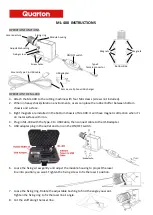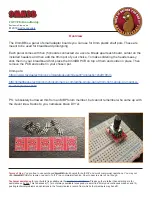
8
SECTION 6
•
CABLING TECHNIQUES
As stated, no special "noise treated" cables are required when operating with
low impedance accelerometers. Signals may be run over any conventional
Instrumentation grade two wire twisted pair shielded or coaxial cable.
SECURING CABLES
Figure 6-1 shows the recommended method of securing cables. These
conventions minimize cable or connector fatigue failures and consequent loss of
data. Typically, low impedance devices are not affected by sharp cable bends
or cable
motion.
Figure 6-1.
Cable
Routing and Securing
SPLICING
&
EXTENDING CABLES
Common sense and care should
be
used when splicing and extending
cables. Of course, it i
s
always a good Idea to turn off
all
power and, if
possible, disconnect the accelerometer and power supply when performing
this work.
When extending a coaxial cable, it is advisable
to
use coaxial connectors.
Male and female cable connectors are readily available for this purpose
(i.e.,
BNC to BNC, TNC to TNC, 10-32
to
10-32,
etc.).
These
adapters and
extension cables are available from OMEGA.













































